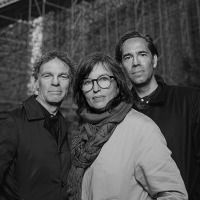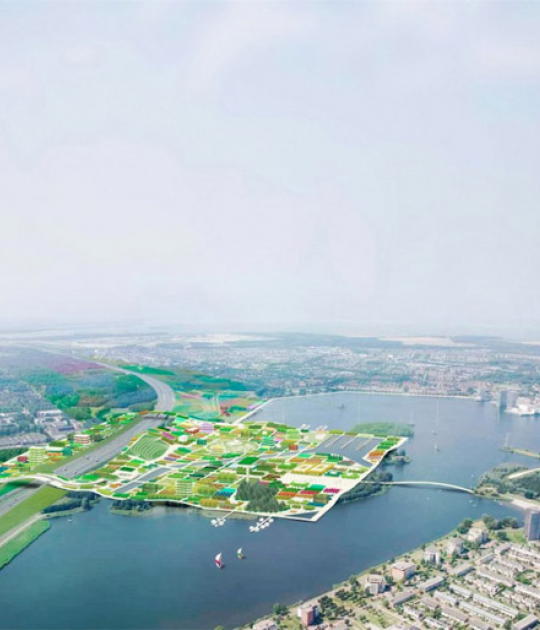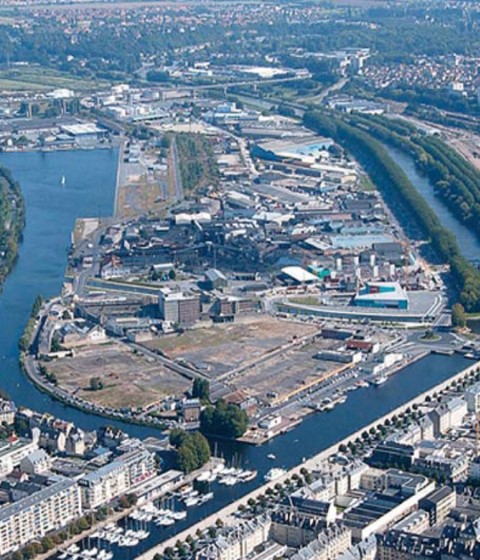The pixelated volume based on small-scale working units adapts to the various influences of the urban context, combining an efficient and flexible internal organisation with a variety of specific communal spaces such as the main entrance lobby, a transparent trading floor, a sheltered public passage, respect for urban view lines and collective terraces overlooking the fjord to the south. The glass and brick exterior expresses both the transparency and stability of DNB as a modern financial institution.
The development of the new headquarter cluster is a strategic operation concentrating the DNB offices formerly spread out over Oslo at one location, aiming for synergy and a clear identity. The objective was to translate the social and democratic character of the organisation into a building with excellent working conditions and spatial qualities that would stimulate efficiency, identity and collaboration.
The design is based on an ideal work group of the bank, a pixel of 6x6 metres, whose versatility permits adaptation to the flexible nature of the organisation. Besides more than 2,000 flexible work spaces the building contains a panoramic 140 seat canteen on the top level, the executive lounge with a view over the fjord, the board room, in the heart of the volume DNB´s trading room with 250 work stations, and the main entrance with the reception and access to the concourse that connects to the two neighbouring volumes. The collective spaces are connected by a staggered continuous internal route of collective terraces, all being executed as glass pixels, encouraging informal meetings and communication between employees.

This route meanders from the reception upwards through the building, connecting all 17 levels office levels with the communal areas. A series of wooden stairs and bridges allow employees to switch levels or even to walk up to the canteen on one side of the building and down on the other side. The route accommodates communal areas to the office floors and is made homely with a series of pantries, informal meeting areas, reading-rooms, lounges and fire places. It gives access to the various outdoor terraces and roof gardens. All these collective spaces offer views to the surroundings and transparency from outside. The route is naturally ventilated and has a high performance glass fit for the cold Norwegian winter.
The generic office floors recline and are recessed in various places to answer to the urban context creating communal indoor and outdoor areas and outstanding daylight conditions. At street level the building volume is opened to give space to sheltered entrance zones, and intersected by a public passage creating a public route between Oslo Central Station and the fjord. The pixelated design allows this specific response whilst being highly efficient and flexible. As a result, every floor of the building is both unique and generic: the pixelated volume makes the generic specific.
The structure is conceived as a steel rack wrapped in a brick skin, covering all exterior terraces, walls and ceilings with bricks, which adopts Norwegian environmental standards and gives a human scale to the building. It appears as a rock, a strong shape within the boundaries of the Barcode.
The international Norwegian financial institution DNB decided to concentrate their twenty office locations currently dispersed over the city in the Bjørvika Barcode, an urban plan by MVRDV / DARK / a-lab next to Oslo Central Station. In 2007, the master plan team was commissioned by developer OSU to design the urban concept for DNB’s headquarter complex. A new cluster of three volumes (80.000m2) and a common basement with a 3,000m2 underground concourse, which interlinks the three buildings of the bank, was developed. MVRDV was commissioned as architect for the central main building and co-responsible for the urban concept and concourse.
MVRDV has collaborated with Norwegian co-architect DARK Arkitekter AS and various Norwegian engineering firms. Project management is executed by Norwegian firm Vedal Project AS. The second building of the DNB cluster is designed by A-lab and the third building by Dark Arkitekter, within the overall Bjørvika Barcode master plan. The cluster will be officially opened May 14th 2013.
DNB is the largest financial services group in Norway. The Group consists of brands such as DNB, Vital, Nordlandsbanken, Cresco, Postbanken, DnB NORD and Carlson. In 2003, MVRDV, together with Norwegian firms Dark and a-lab, won the competition for the Bjørvika waterfront development with the design of the Bjørvika Barcode; a dense, open and differentiated urban master plan along Nyland Allé, that is developed and realised by OSU in phases. DNB Life Insurance (DNB Scandinavian Property Fund) bought the 3 buildings last year for 4,8 billion Norwegian krone.
CREDITS
Project name: TP236F (DnB NOR) DNB
Location: Oslo Nyland Ale, Bjørvika Barcode masterplan.
Client: Oslo S Utvikling (OSU), Oslo, Norway.
Project Size and Program: 36.500 m² building (in contract , in reality 38,500m² + 1,600m² exterior terraces + 520m² of interior terraces with glass roof), and 3.000 m² collective space concourse. 2000 flexible work spaces, trading floor with 250 work stations, main entrance, boardroom and executive lounge, meeting lounge, panoramic restaurant, sheltered arcade and public passage.
Project Schedule Sketch Design: 2007
Preliminary Design: 2007
Definite Design: 2008
Tender Phase: 2008/2009
Start execution: 2009
Design:
Architect: MVRDV. Winy Maas, Jacob van Rijs, Nathalie de Vries with Jeroen Zuidgeest, Aser Giménez Ortega, Marin Kulas, Merlijn Huijbers , Ida Ruth Mathisen, Bart Milon, Jeanne Despas, Billy Guidoni, Gerd Wertzel, , Francesco Pasquale, Paul Kroese, Joanna Gasparski, Chris Green, Richard Prest, Jonathan Louie, Marta Gierczynska.
Co-Architect: DARK Arkitekter, Oslo, Norway.
Interior architect: Zinc, Oslo, Norway.
Advisors:
Structural engineers: Multiconsult, Oslo, Norway.
Structural engineer SD phase: Arup, Amsterdam, the Netherlands.
Climate and installation engineering: Erichsen and Horgen AS, Oslo, Norway.
Fire engineering: NEAS Brannconsult AS, Oslo, Norway.
Electric engineering: ECT AS, Oslo, Norway.










































